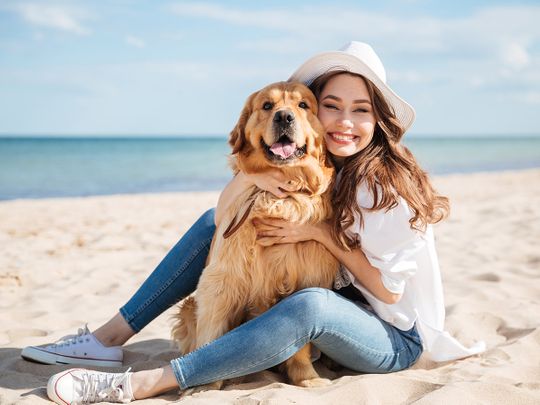
Summer is upon us and the majority of us will stay comfortable while nestled indoors with the air conditioning on full blast. Our safe havens from the heat will include our pets as well, but the hot weather makes for some unique summer pet care challenges.
As the temperature rises, animals are at risk of developing seasonal conditions such as dehydration, heat stroke, sunburn, allergies, and parasitic infections.
“Running, walking and exercising pets can be a challenge and is restricted to before sunrise and after sunset,” says Dr Dieter Malleczek, Medical Director and Partner, Blue Oasis Veterinary Clinics. “However, the combination of humidity and temperatures above 30 degrees can cause heat strokes even after sunset. You need to carry plenty of water while walking dogs and wait for the pavement to cool down. Also, the sand is very hot and can burn the pads of the pets very badly. Natural grass is the only surface that is cool for the paws. Closed areas such as cars, balconies and even backyards can be death traps.”
While summer is a time for pets and their owners to enjoy outdoor activities, Dr Saman Bhatti, Veterinary Surgeon, The City Vet Clinic — Al Warqa Branch, warns of the unique challenges for pet parents to consider. “The warm weather and humidity can cause dehydration, which is a significant risk for pets,” says Dr Bhatti. “Sun exposure can cause sunburn, heatstroke, and skin cancer. Insects, allergies, and parasites like ticks and fleas are also common issues during this season.”
Taking responsibility
Pet owners should also be aware that some animals are more vulnerable to summer ailments than others. According to Dr Malleczek, short-nosed breeds (snub-nose breeds) struggle a lot more than long-nosed pets. “Just compare the shape of the head and nose of an English Bulldog to a Saluki, who is perfectly adapted to the climate where he lives,” he says. “For cats just compare a Persian or British Shorthair to an Arabian Mau or Siamese. Other risk factors are heart conditions and chronic lung conditions.”
Unlike humans, cats and dogs can’t sweat through their skin and so they rely on panting and releasing heat through their paw pads and nose to regulate their body temperature and keep cool. “That’s why you find them panting when feeling hot or you can see small paw-prints while they are walking over your shiny floors,” says Dr Malleczek. “Pouring water over dogs before walking them helps a lot as well.”
Breeds with respiratory problems such as pugs, bulldogs, and boxers are more prone to heatstroke, says Dr Bhatti. “Older pets and those with underlying health conditions like heart disease or respiratory issues are also at higher risk,” she says.
As pet owners, we must take responsibility for our companions and protect them from the potential threats that come with the hot, humid months. To ensure your pet’s well-being during the summer, keep an eye out for signs of dehydration, such as dry mouth, lethargy, and decreased urine output. “Provide plenty of fresh water and shade for all pets, avoid exercising them during the hottest parts of the day, and use sunscreen on pets with light-coloured fur,” advises Dr Bhatti. “Seek veterinary care immediately if you notice any unusual symptoms or behaviours in pets.”
Dr Malleczek concludes: “Regular health check ups, vaccinations and proper parasite control are the absolutely must for an indoor family pet. Try to catch changes in food
and water uptake, body posture and change in ability to exercise as early as possible — early detection means most of the time faster cure.”















